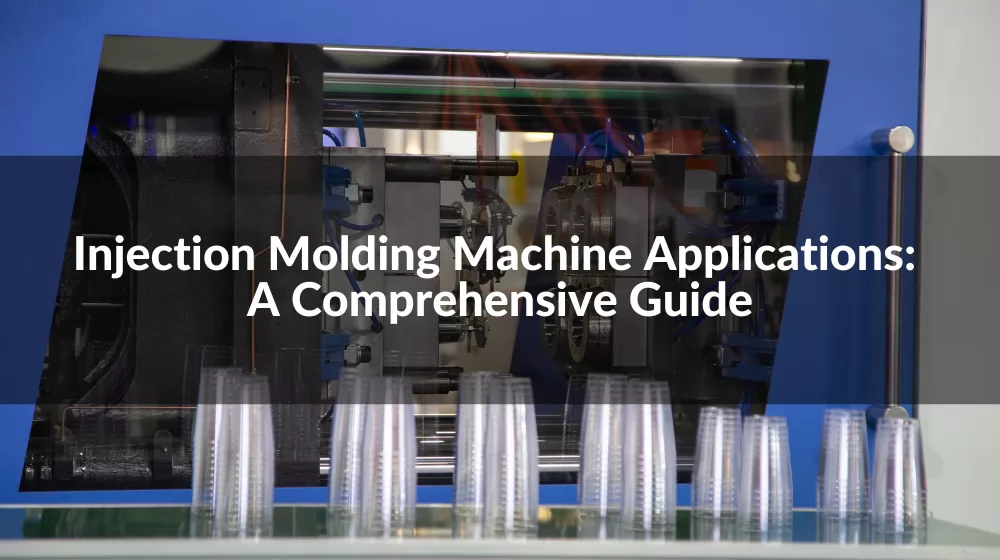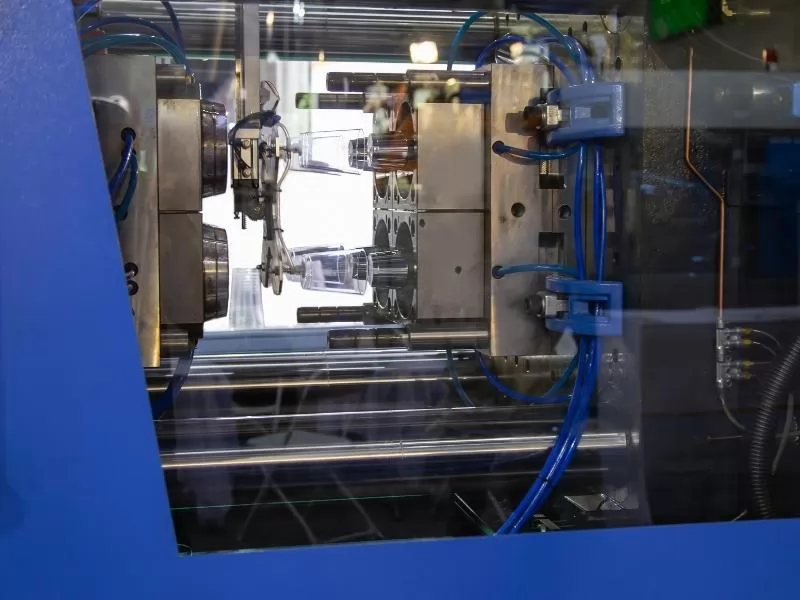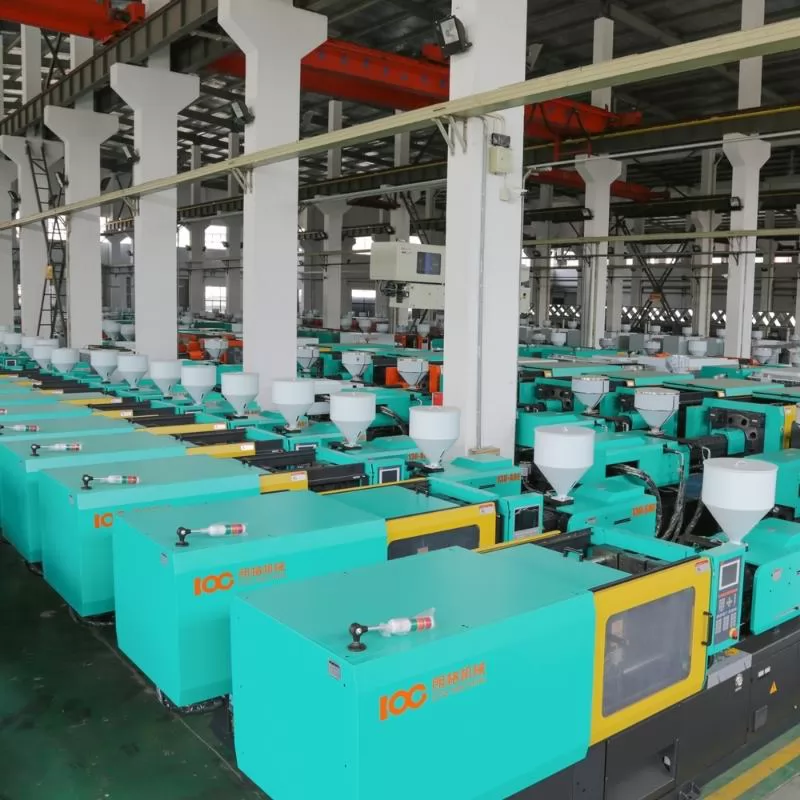
Injection molding is a manufacturing process used to produce a wide range of products, from small components to large automotive parts. Injection molding machines are the primary tool used in this process, and they are designed to melt and inject plastic materials into molds to create a specific shape or design.
In this article, we will provide a comprehensive guide to injection molding machines, covering the basic components, machine types, advantages, common issues, and future trends in this field.
-
Introduction to Injection Molding Machines: What You Need to Know
-
Understanding the Basic Components of Injection Molding Machines
-
Choosing the Right Injection Molding Machine for Your Application
-
Common Issues with Injection Molding Machines and How to Solve Them
-
The Future of Injection Molding Machines: Trends and Innovations
-
Different Types of Injection Molding Machines: Which One is Right for You?
-
The Impact of Industry 4.0 on Injection Molding Machine Applications
-
How to Optimize Your Injection Molding Process for Efficiency and Quality
-
Injection Molding Machine Safety: Best Practices for Operators
-
The Importance of Material Selection in Injection Molding Applications
-
Using Injection Molding Machines for Medical Device Manufacturing
-
Injection Molding Machine Applications in the Packaging Industry
-
Injection Molding Machine Applications in the Consumer Goods Industry
-
Understanding the Economics of Injection Molding Machine Applications
-
Sustainability in Injection Molding Machine Applications: Best Practices
-
Choosing the Right Injection Molding Machine Supplier for Your Business
1.Introduction to Injection Molding Machines: What You Need to Know
Injection molding is a manufacturing process used to produce a wide range of products, from small components to large automotive parts. Injection molding machines are the primary tool used in this process, and they are designed to melt and inject plastic materials into molds to create a specific shape or design.
In this article, we will provide a comprehensive guide to injection molding machines, covering the basic components, machine types, advantages, common issues, and future trends in this field.
2.Understanding the Basic Components of Injection Molding Machines
Injection molding machines are complex pieces of machinery with a variety of components that work together to create high-quality plastic parts. Understanding the basic components of injection molding machines is essential for choosing the right machine for your application and for maintaining and troubleshooting your machine.
Here are some of the basic components of injection molding machines:
Hopper
The hopper is the part of the injection molding machine where the plastic pellets are stored before they are melted and injected into the mold. The hopper is typically made of plastic or stainless steel and is equipped with a heater to help melt the plastic.
Screw
The screw is the component of the injection molding machine that moves the plastic pellets from the hopper to the heating chamber. The screw is usually made of steel and is driven by a motor.
Heating Chamber
The heating chamber is where the plastic pellets are melted by the heat generated from the heater bands around the chamber. The temperature in the heating chamber must be carefully controlled to ensure that the plastic is melted to the right temperature and viscosity.
Injection Unit
The injection unit is responsible for injecting the melted plastic into the mold. The injection unit consists of a barrel, nozzle, and mold clamp.
Clamping Unit
The clamping unit is responsible for holding the mold in place during the injection molding process. The clamping unit consists of two platens that close around the mold and hold it in place with a high amount of force.
Controller
The controller is the brain of the injection molding machine. It is responsible for controlling the various components of the machine, such as the heating chamber, injection unit, and clamping unit.
Understanding the basic components of injection molding machines is essential for choosing the right machine for your application and for maintaining and troubleshooting your machine. With this knowledge, you can ensure that your machine is operating efficiently and producing high-quality plastic parts.

3.Choosing the Right Injection Molding Machine for Your Application
Choosing the right injection molding machine for your application is critical to achieving high-quality, efficient production. The selection process should consider several factors, including the type of material, product design, production volume, and cost.
There are various types of injection molding machines available, including hydraulic, electric, and hybrid machines, each with its unique features and benefits. It is essential to work with an experienced supplier to determine the best machine for your specific needs.
4.The Advantages of Using Injection Molding Machines
Injection molding machines offer several advantages over other manufacturing processes, such as high production rates, repeatable accuracy, and the ability to produce complex shapes and designs. They also require minimal post-production finishing, resulting in lower overall costs and faster time-to-market.
Furthermore, injection molding is a highly automated process, requiring minimal human intervention, reducing labor costs and improving production efficiency. Injection molding also allows for a range of materials to be used, including thermoplastics, thermosets, and elastomers, providing versatility in the manufacturing process.
5.Common Issues with Injection Molding Machines and How to Solve Them
While injection molding machines offer many benefits, they can also experience common issues, such as flash, short shots, warping, and sink marks. These issues can be caused by several factors, including machine settings, material selection, mold design, and temperature control.
To solve these issues, it is essential to work with experienced technicians and engineers who can troubleshoot the process and implement appropriate solutions. Regular maintenance and calibration of the machine can also prevent issues from occurring and ensure consistent, high-quality production.
6.The Future of Injection Molding Machines: Trends and Innovations
The future of injection molding machines is exciting, with several trends and innovations on the horizon. One of the most significant advancements is the use of digital technologies and artificial intelligence, which can enhance the accuracy, efficiency, and automation of the injection molding process.
Other trends include the use of sustainable materials and processes, such as biodegradable plastics and renewable energy sources, and the development of advanced sensor technologies that can monitor and optimize the injection molding process in real-time.
7.Different Types of Injection Molding Machines: Which One is Right for You?
Injection molding machines come in a variety of types and sizes, each designed for specific applications. The three most common types of injection molding machines are hydraulic, electric, and hybrid.
Hydraulic injection molding machines use hydraulic pressure to generate the necessary clamping force. They are commonly used for high-volume production runs and can produce large and complex parts. However, they are also more expensive to operate due to their high energy consumption and maintenance costs.
Electric injection molding machines use electric servo motors to generate the necessary clamping force. They are more energy-efficient than hydraulic machines and offer better repeatability and precision. Electric machines are ideal for clean-room applications, such as medical devices and electronics, as they produce less noise and vibration.
Hybrid injection molding machines combine the best features of hydraulic and electric machines. They use a hydraulic system to generate the clamping force and electric servo motors for injection and ejection. Hybrid machines are versatile and energy-efficient, making them a popular choice for a wide range of applications.
8.The Impact of Industry 4.0 on Injection Molding Machine Applications
Industry 4.0, also known as the Fourth Industrial Revolution, is the integration of digital technologies into the manufacturing process. The use of IoT, artificial intelligence, and machine learning has revolutionized the injection molding industry, improving efficiency, reducing waste, and increasing productivity.
One of the most significant impacts of Industry 4.0 on injection molding applications is the use of real-time monitoring and analytics. Sensors embedded in the injection molding machine and the production line provide real-time data on process variables such as temperature, pressure, and cycle time. This data is analyzed to optimize the process and improve quality, reducing the risk of defects and waste.
Another impact of Industry 4.0 is the use of predictive maintenance. Machine learning algorithms analyze the data from sensors to predict when maintenance is needed, reducing downtime and increasing machine availability.

9.How to Optimize Your Injection Molding Process for Efficiency and Quality
Optimizing your injection molding process is crucial to achieving high efficiency and quality. The following steps can help you optimize your process:
-
Conduct a process analysis: Analyze your process to identify areas for improvement. Look for inefficiencies, defects, and waste.
-
Use data-driven decision-making: Collect and analyze data to make informed decisions about process improvements.
-
Implement process improvements: Based on your analysis, make changes to your process to improve efficiency and quality.
-
Train your operators: Provide your operators with the necessary training to understand the process and identify issues.
-
Continuously monitor and improve: Regularly monitor your process and collect data to identify further improvements.
10.Injection Molding Machine Safety: Best Practices for Operators
Injection molding machines can be dangerous if not operated correctly. It is essential to follow best practices to ensure operator safety. The following are some best practices for injection molding machine operators:
-
Use proper personal protective equipment: Operators should wear the appropriate PPE, such as safety glasses, gloves, and earplugs.
-
Follow lockout/tagout procedures: Lockout/tagout procedures should be followed when performing maintenance on the machine to prevent accidental start-up.
-
Follow proper startup and shutdown procedures: Proper startup and shutdown procedures should be followed to ensure the machine is safe to operate.
-
Keep the area around the machine clean and free from obstructions: A clean and unobstructed workspace can prevent accidents and injuries.
-
Use caution when handling hot materials: Hot materials can cause burns and other injuries. Operators should use caution when handling these materials.
-
Follow machine-specific safety procedures: Each injection molding machine may have specific safety procedures that operators must follow. Operators should familiarize themselves with these procedures and follow them carefully.
11.The Importance of Material Selection in Injection Molding Applications
Material selection is a critical factor in injection molding applications. The choice of material affects the strength, durability, and appearance of the final product. The following are some factors to consider when selecting materials for injection molding:
-
Mechanical properties: The mechanical properties of the material, such as tensile strength and impact resistance, must be suitable for the intended application.
-
Chemical resistance: The material must be resistant to chemicals that it may come into contact with during use.
-
Heat resistance: The material must be able to withstand the temperature of the process and the environment in which it will be used.
-
Appearance: The material must be able to achieve the desired appearance, such as color and texture.
-
Cost: The cost of the material must be considered, as it can significantly affect the overall cost of production.
-
Sustainability: The environmental impact of the material should be considered, such as its recyclability and biodegradability.

12.Using Injection Molding Machines for Medical Device Manufacturing
Injection molding machines are widely used in the manufacturing of medical devices due to their ability to produce high-quality parts with tight tolerances and consistent quality. This is crucial in the production of medical devices where accuracy and precision are of utmost importance.
In addition to their precision and accuracy, injection molding machines are also able to produce complex medical device parts with intricate geometries. This is especially useful in the production of implants, surgical tools, and other medical devices that require intricate shapes and designs.
Another advantage of using injection molding machines for medical device manufacturing is the ability to produce parts at a high volume with minimal waste. This is important in the medical device industry where every part must meet strict quality standards and any waste can result in increased costs and potential risks to patient safety.
However, it is important to note that the materials used in medical device manufacturing must meet strict regulatory standards, including biocompatibility and sterilization requirements. Manufacturers must carefully select materials and ensure that they are able to withstand the rigors of the sterilization process without compromising the quality and performance of the final product.
In summary, injection molding machines play a critical role in the medical device manufacturing industry by enabling the production of high-quality parts with precision, accuracy, and consistency while meeting strict regulatory standards.
13.Injection Molding Machine Applications in the Packaging Industry
The packaging industry is another sector that relies heavily on injection molding machines for the production of high-quality plastic parts. Injection molding machines are commonly used to produce a wide range of packaging products such as containers, lids, caps, and bottles.
One of the key advantages of using injection molding machines in the packaging industry is the ability to produce parts at a high volume with minimal waste. This is particularly important in the production of single-use packaging products, where efficiency and cost-effectiveness are paramount.
In addition to their efficiency and cost-effectiveness, injection molding machines are also able to produce parts with a high degree of consistency and accuracy. This is important in the packaging industry, where parts must meet strict quality standards and any variations in size or shape can result in product defects or failures.
Another advantage of using injection molding machines in the packaging industry is the ability to produce parts with a wide range of colors and finishes. This allows manufacturers to create packaging products that are not only functional but also visually appealing and eye-catching, helping to differentiate their products in a crowded marketplace.
However, it is important to note that the materials used in packaging applications must be carefully selected to ensure that they are safe for use with food and other consumer products. Manufacturers must also ensure that their production processes meet strict regulatory standards for safety and quality.
14.Injection Molding Machine Applications in the Consumer Goods Industry
The consumer goods industry is another sector that relies heavily on injection molding machines for the production of a wide range of plastic parts. Injection molding machines are commonly used to produce products such as toys, appliances, electronic components, and other consumer goods.
One of the key advantages of using injection molding machines in the consumer goods industry is the ability to produce parts with a high degree of consistency and accuracy. This is important in the production of consumer goods, where parts must meet strict quality standards and any variations in size or shape can result in product defects or failures.
In addition to their precision and accuracy, injection molding machines are also able to produce parts with a wide range of colors, finishes, and textures. This allows manufacturers to create consumer goods that are not only functional but also visually appealing and innovative, helping to differentiate their products in a highly competitive marketplace.
Another advantage of using injection molding machines in the consumer goods industry is the ability to produce parts at a high volume with minimal waste. This is particularly important in the production of mass-market consumer goods, where efficiency and cost-effectiveness are paramount.
However, it is important to note that the materials used in consumer goods applications must be carefully selected to ensure that they are safe for use and do not pose any risks to consumer health or safety. Manufacturers must also ensure that their production processes meet strict regulatory standards for safety and quality.
In summary, injection molding machines play a critical role in the consumer goods industry by enabling the production of high-quality, efficient, and visually appealing products that meet strict quality and safety standards.
15.Understanding the Economics of Injection Molding Machine Applications
When it comes to injection molding machine applications, understanding the economics of the process is essential for businesses looking to optimize their operations and maximize profitability. There are several factors to consider when it comes to the cost-effectiveness of injection molding, including materials costs, machine costs, labor costs, and production volume.
One of the key factors in the economics of injection molding is material costs. The cost of raw materials, such as plastic resins, can vary widely depending on factors such as material type, quality, and availability. It is important for businesses to carefully consider their material needs and choose the most cost-effective options for their specific application.
Machine costs are another important factor to consider. Injection molding machines can be a significant investment for businesses, with costs ranging from tens of thousands to hundreds of thousands of dollars or more. It is important to choose a machine that is appropriate for the specific application and that can be operated efficiently to maximize production output and minimize downtime.
Labor costs are also a factor in the economics of injection molding. While injection molding machines are highly automated, skilled operators are still required to set up and maintain the machines, as well as inspect and handle finished parts. It is important to ensure that labor costs are optimized through efficient production processes and training programs.
Production volume is perhaps the most important factor in the economics of injection molding. The higher the production volume, the more cost-effective the process becomes, as fixed costs such as machine and labor costs can be spread out over a larger number of parts. It is important for businesses to carefully consider their production volume needs and choose a machine that is appropriate for their specific application.
In addition to these factors, businesses must also consider the potential costs associated with production delays, product defects, and regulatory compliance issues. By carefully considering these factors and optimizing their production processes, businesses can maximize the cost-effectiveness of injection molding machine applications and achieve long-term success in their industry.

16.Sustainability in Injection Molding Machine Applications: Best Practices
In modern times, there has been a growing recognition of the significance of sustainability in the manufacturing industry, particularly in injection molding machine applications. As consumers become more environmentally aware, it is imperative for businesses to adopt measures to reduce their ecological impact and promote sustainable practices.
To promote sustainability in injection molding machine applications, there are various best practices that businesses can implement. One crucial aspect is to use materials that are environmentally friendly and can be recycled or reused. This not only minimizes waste but also helps conserve natural resources and reduce greenhouse gas emissions.
Another key best practice is to optimize production processes to reduce energy consumption and minimize waste. This can be achieved by using energy-efficient equipment, optimizing machine settings, and implementing lean manufacturing practices.
Proper waste management and disposal are also important for businesses. This may involve initiating recycling programs, decreasing the use of hazardous materials, and properly disposing of non-recyclable or non-reusable waste generated during the injection molding process.
Moreover, investing in research and development to develop new and innovative materials and production methods that are more environmentally friendly can promote sustainability. By taking a proactive approach towards sustainability, businesses can not only minimize their ecological impact but also gain a competitive advantage in the market by appealing to environmentally conscious customers.
17.Choosing the Right Injection Molding Machine Supplier for Your Business
When one seeks to acquire a suitable provider for their injection molding machine necessities, several crucial factors must be considered. Foremost, the provider must possess a commendable standing and an established record of distributing quality machinery and unparalleled customer support.
Furthermore, one ought to take into account the provider's proficiency and familiarity with the industry. Ideally, one would wish to engage with a provider who possesses a profound comprehension of injection molding technology and can offer counsel and assistance throughout the entire procurement process.
An additional significant element to bear in mind is the extent of machinery and amenities presented by the provider. Is there an assortment of machines to select from, or are their options limited? Do they present installation, upkeep, and repair services? These are all pertinent inquiries to ask when assessing potential providers.
It is important to note that while cost is a factor, the least expensive option may not always be the best. One must ensure that they obtain a durable, reliable, and superior machine, even if that involves paying a marginally higher price.
Apart from assessing providers based on the aforementioned criteria, it is also beneficial to peruse customer reviews and testimonials. This allows for a better grasp of the provider's standing and the caliber of their products and services.
18.Conclusion
Injection molding machines have a wide range of applications across a variety of industries, and choosing the right machine for your needs is critical to success. By understanding the basic components of these machines, the different types available, and how to optimize your molding process for efficiency and quality, you can maximize the benefits of injection molding technology.
It's also important to stay up-to-date on the latest trends and innovations in the industry, and to work with a reputable supplier who can provide the guidance and support you need to achieve your goals.
Whether you're manufacturing medical devices, automotive parts, or consumer goods, injection molding technology can offer a range of benefits in terms of efficiency, quality, and cost-effectiveness. By taking the time to learn about the technology and how to best leverage it for your specific needs, you can stay ahead of the curve and position your business for success in the years to come.
Read More:
How to select a Plastic Injection Molding Machine
Top 10 Injection Molding Machine Manufacturer in World(2023 Updated)
2023 Top 30 China Injection Molding Machine Manufacturer Brands: Ultimate List
Electric VS Hydraulic Injection Molding Machine
Injection Molding Machine Maintenance: What You Need to Know













